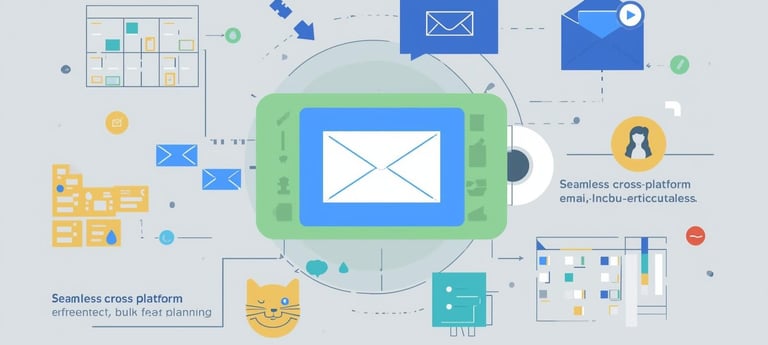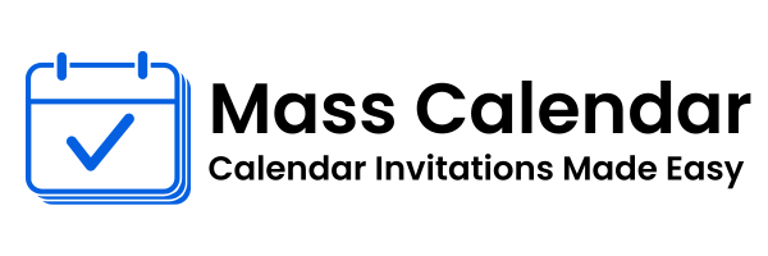A Deep Dive Into Email-Based Scheduling: Calendar Invites, Cross-Platform Use & Bulk Planning
Digital calendars have become fundamental to everyday work and communication. Whether you’re coordinating a small team meeting or planning a company-wide event, knowing how to manage calendar invitations is crucial. Many professionals still search for clear explanations on how to send calendar invite Gmail, how to send a calendar invite on Gmail, or even how to send a calendar invite on Outlook. Understanding these processes helps build stronger communication habits and avoids scheduling conflicts.
BLOG
11/18/20253 min read


Digital calendars have become fundamental to everyday work and communication. Whether you’re coordinating a small team meeting or planning a company-wide event, knowing how to manage calendar invitations is crucial. Many professionals still search for clear explanations on how to send calendar invite Gmail, how to send a calendar invite on Gmail, or even how to send a calendar invite on Outlook. Understanding these processes helps build stronger communication habits and avoids scheduling conflicts.
This blog provides a neutral, comprehensive overview of digital calendar management while keeping the content simple, accessible, and free from promotional elements.
Why Calendar Invitations Are Now the Standard
Gone are the days when people manually typed event details into emails. Today’s systems offer built-in features that automatically sync schedules, remind participants, and track meeting responses.
Using calendar invitations ensures:
Fewer scheduling errors
Automatic reminders
Consistent event formats
Clear expectations
Reduced email clutter
Whether using Outlook or Gmail, both systems deliver structured event data that integrates seamlessly into users’ workflows.
Google Calendar and Gmail: Understanding the Basics
People commonly want to know how to send calendar invite Gmail or how to send a calendar invite on Gmail for personal, academic, or professional reasons. Google’s calendar ecosystem is widely used due to its simplicity.
Key functions include:
Creating events with custom titles
Adding guests
Attaching meeting links
Sending automatic notifications
Allowing updates in real-time
Its flexibility makes it suitable for both individual planning and large-scale coordination.
Outlook Calendar Invitations: Features and Importance
Microsoft Outlook remains a cornerstone for corporate scheduling. Many organizations depend on Outlook calendar invitations for consistent internal communication.
Outlook provides:
Professional event templates
RSVP tracking
Time-zone intelligence
Room & resource booking
Attachments within invites
For anyone learning how to send a calendar invite on Outlook, mastering these functions improves efficiency and reduces scheduling miscommunication.
Essential Components of a Well-Structured Calendar Invite
Regardless of the platform, a clear and effective invitation should include:
1. Event Title
This should describe the purpose clearly and concisely.
2. Date and Time
Double-check time zones to avoid confusion.
3. Agenda or Objective
Participants appreciate knowing what to expect.
4. Meeting Link or Location
Virtual meetings require clean, clickable links.
5. Attachments
Supporting material, documents, or presentations should be included.
6. Follow-Up Instructions
Especially useful for workshops or structured events.
By following these guidelines, users ensure their calendar communication remains consistent and professional.
Cross-Platform Invitation Behavior
Invitations behave slightly differently depending on the platform:
A Gmail user sending an Outlook invite will still see proper formatting.
An Outlook user sending to Gmail might see slight variations, but the structure is preserved.
Updates propagate across devices, but users must accept the original invitation for syncing to work properly.
Understanding this helps users manage expectations and maintain clarity when inviting external recipients.
Working With Large Groups: Managing Calendars Bulk Requirements
Sometimes, scheduling isn’t limited to small teams. Large events, online sessions, or training modules may require calendars bulk invitations or repetitive event creation.
Key considerations include:
Reviewing recipients carefully
Avoiding multiple conflicting invites
Creating consistent formats
Scheduling reminders thoughtfully
Ensuring attachments are accessible
While many platforms support multiple-recipient invitations, the strategy must remain organized to prevent confusion, repeated events, or mismatched information.
Common Scheduling Mistakes and How to Avoid Them
1. Sending Too Many Updates
If participants receive multiple changes, they may lose track of the final schedule.
2. Not Using the Built-In Invite Format
Typing event details manually in emails increases the risk of errors.
3. Overlooking Time Zones
In global settings, this is the most frequent cause of missed meetings.
4. Forgetting Attachments
Always add these before sending the invite.
5. Not Clarifying the Purpose
Every event should communicate its objective clearly.
Being aware of these patterns ensures smooth interaction and helps users avoid the frustrations commonly associated with poor scheduling practices.
Practical Tips for Better Digital Scheduling
Keep event titles short and meaningful.
Double-check spelling of guest emails.
Use reminders strategically not excessively.
Review your calendar weekly to optimize upcoming commitments.
Sync your phone and laptop calendars to avoid missing notifications.
These habits contribute to better time-management and improved workflow.
Closing Thoughts
Calendar systems have simplified how individuals and teams manage time, events, and shared commitments. Whether you’re trying to figure out how to send calendar invite Gmail or understanding how Outlook calendar invitations work, mastering these tools empowers you to collaborate effectively.
With digital workspaces becoming more interconnected, knowing how to schedule events clearly and manage calendars bulk processes ensures consistent, dependable communication. No matter the platform you choose, a well-structured calendar invitation helps maintain productivity, reduces misunderstandings, and supports smoother everyday operations.
MassCalendar.in
Send Bulk & Mass Calendar Invites Instantly
CONTACT
Meetings
+44 (0) 203 916 5117
© 2025. All rights reserved.
Help?
